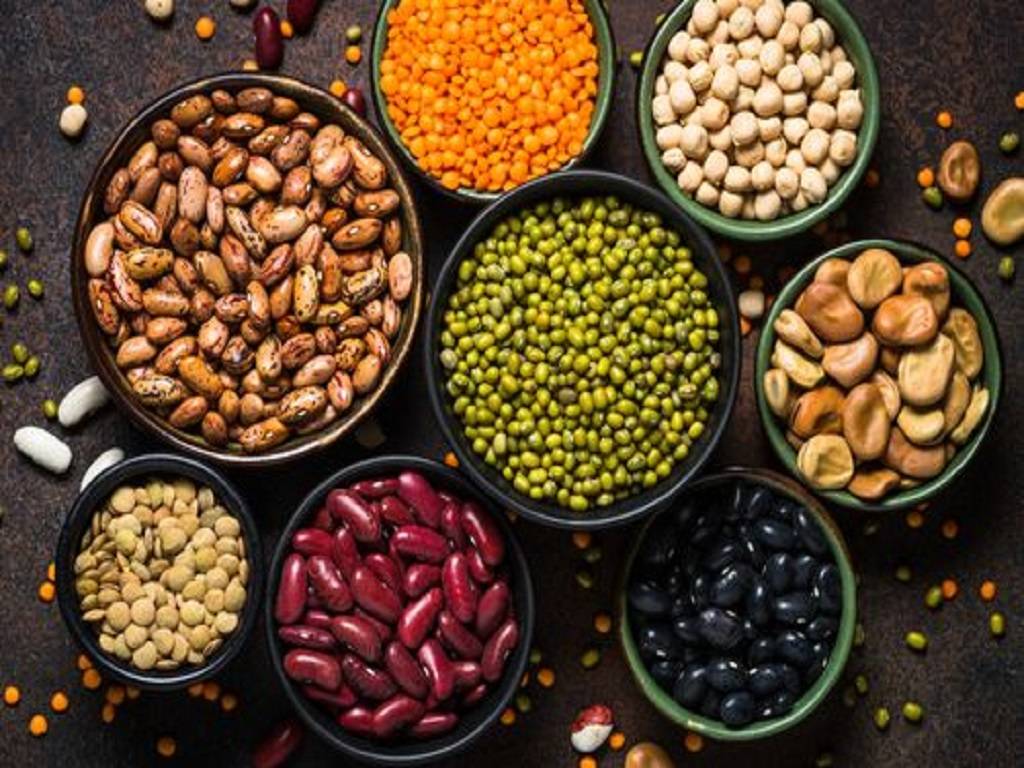
There are many from the beans and legumes family like kidney beans, chickpeas, lentils, pinto beans, navy beans, peas, black beans, soybeans, and peanuts that we most commonly find in our kitchens and enjoy making these a part of our meals.
But did you know that these commonly eaten beans and legumes that our mothers and grandmothers force us to eat are actually packed with many nutrients, fibre, zinc, magnesium, protein, minerals and vitamins?
The fruits or seeds of the Fabaceae plant family are what we refer to as beans and other legumes. They are widely consumed and rich in fibre, as well as vital vitamins and minerals. They can be used in many dishes and can be consumed as a side dish, snack, taco, soup, stew or even added to salads.
And where the world is turning vegan, adding these to your diet can fulfil all your protein requirements. These provide lots of health benefits. Having them regularly can even help improve good gut bacteria, and lower blood sugar levels & cholesterol.
Here’s a list of some of the beans and legumes that are commonly available in our kitchen and are super good.
Kidney beans:
One of the most popular legumes, kidney beans are frequently eaten with rice. They offer a variety of health advantages.
Foods high in fibre, including kidney beans, can aid in reducing blood sugar levels by slowing the absorption of sugar into the blood.
Consuming kidney beans can also help lower heart disease risk factors like high blood pressure.
Last but not least, kidney beans are a fantastic source of folate. Because this water-soluble vitamin is essential for the neurological development of the foetus, pregnant women should pay special attention to their intake of foods high in folate.
The high fibre content in kidney beans helps lessen the spike in blood sugar that follows a meal.
Soybeans:
In Asia, soybeans are frequently consumed in a variety of dishes, including tofu. They offer a variety of health advantages.
In addition to these minerals, soybeans are rich in isoflavones, which are powerful antioxidants and the source of many of their health advantages.
The fact that soy isoflavones are phytoestrogens may be the cause of many of these advantages. As a result, they are able to simulate the effects of the body's hormone oestrogen, which tends to decrease throughout menopause.
According to research, supplementing with isoflavones can lessen hot flashes and prevent the loss of bone mineral density during menopause.
Soybeans and thus the antioxidants they contain may help lower risk factors for heart disease, some malignancies, and menopausal bone density loss.
Chickpeas:
Chickpeas also called garbanzo beans, are a fantastic source of protein and fibre.
Eating chickpeas and other legumes Can help improve the makeup of gut flora since they are rich in fibre and advantageous plant chemicals.
Some research finds that chickpeas may aid in the prevention of disorders of the digestive system. However, the body of data is small, and human studies are required before we can be certain of how chickpeas may impact our digestive system.
Chickpeas are low in calories and a fantastic source of fibre. Consuming them could enhance intestinal health and lower blood sugar levels.
Peas:
Peas fall into the category of legumes. Peas provide high-quality protein, fibre, vitamins, and antioxidant components that promote health in ways like supporting optimal blood sugar levels and the growth of good gut bacteria.
They contain a considerable amount of protein as well. Pea protein, which is frequently used as a food additive or supplement, has been the subject of much research and may offer advantages.
Peas are a good source of fibre, protein, and vitamins, which help to lower blood pressure and support a healthy gut. Using isolated pea protein could promote muscular growth.
Lentils:
As a fantastic vegetarian source of protein, lentils may be a tasty addition to stews and soups. And counts as comfort food for most of us. Remember the time when you fall sick and the first thing elders ask you to consume is lentil stew?
One of the legumes highest in iron content is lentils. Your body needs iron, a trace mineral, to create haemoglobin, a blood molecule that carries oxygen.
Since there are chances that vegans and vegetarians may be more susceptible to iron deficiency anaemia, using lentils in meals to improve iron intake may be especially beneficial for these groups of people.
Iron and vegetarian protein can both be found in abundance in lentils. Compared to certain other high-carb foods, eating them may lower blood sugar levels.
Peanuts:
An interesting distinction between peanuts and the majority of other nut species is that they are legumes.
In addition to protein and B vitamins, peanuts are a wonderful source of monounsaturated and polyunsaturated fats.
Peanuts can be quite healthy due to their high monounsaturated fat content, especially if they take the place of other food groups in the diet. And we all love munching on hot salted or masala peanuts in the winter season.
In contrast to the control lunch, the study discovered that the peanut meal had no effect on other lipid values, such as total and LDL cholesterol.
Actually, peanuts are a type of bean. They can be good for heart health because they are high in heart-healthy monounsaturated fats.
















